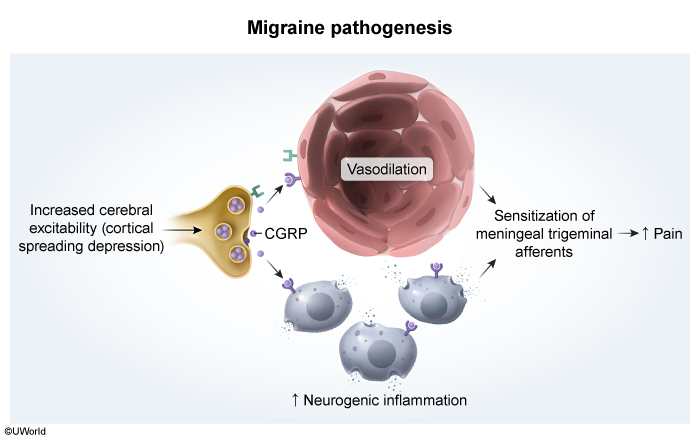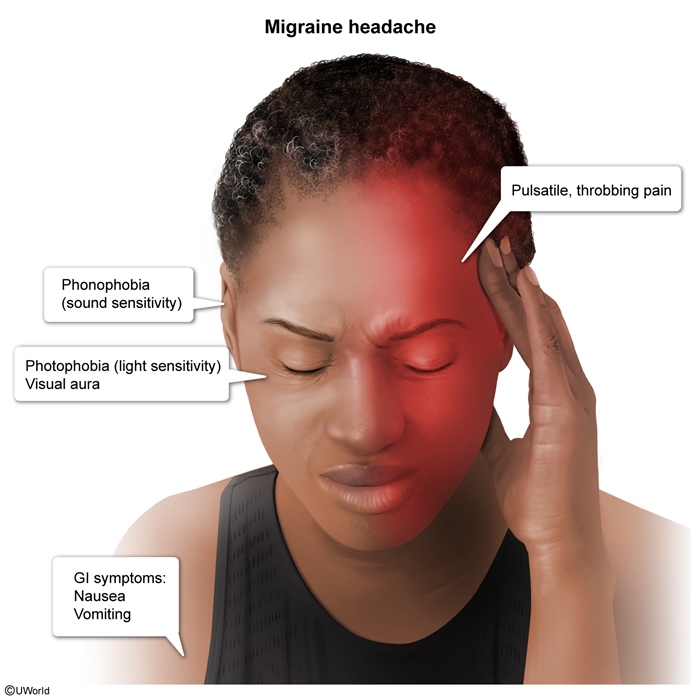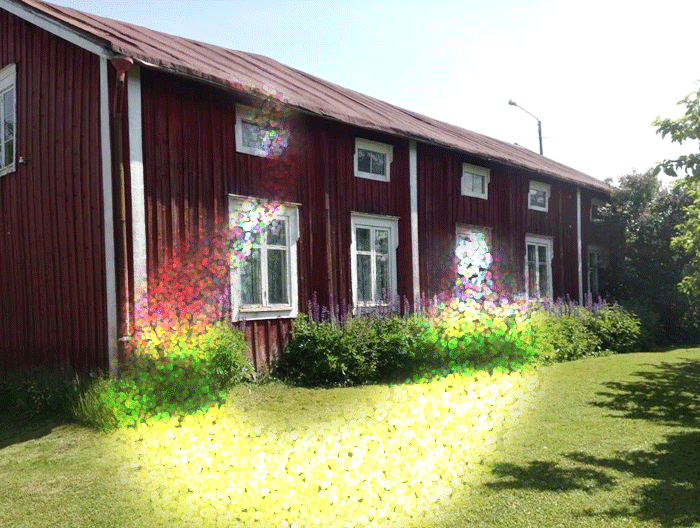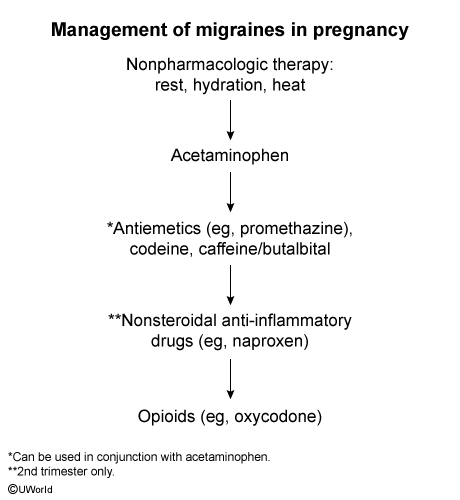Migraine Headache
Article Sections
Introduction
Migraine headaches are a common and disabling neurologic disorder characterized by recurrent episodes of moderate to severe headache pain, often accompanied by nausea, vomiting, and light/sound sensitivity.
Pathophysiology
The pathogenesis of migraines is multifactorial and thought to be initiated by a genetic predisposition to increased cerebral excitability. Migraines start with a self-propagating wave of depolarization (from actively firing neurons) spreading across the cerebral cortex, followed by a period of brief neuronal suppression. This cortical depolarization and suppression are thought to be what causes positive (eg, bright spots, noises, paresthesia) or negative (eg, vision defects, hearing loss, numbness) auras prior to the onset of headache.
The depolarization eventually spreads to trigeminal nerve nociceptors, which extend to the meninges and intracranial vasculature, causing severe headache to develop. The activation of trigeminal afferents results in the release of calcitonin gene-related peptide (CGRP), a neuropeptide involved in pain transmission. CGRP also causes local vasodilation and increased neurogenic inflammation, which can further sensitize trigeminal afferent fibers and increase pain (
Continue Learning with UWorld
Get the full Migraine Headache article plus rich visuals, real-world cases, and in-depth insights from medical experts, all available through the UWorld Medical Library.
Figures



